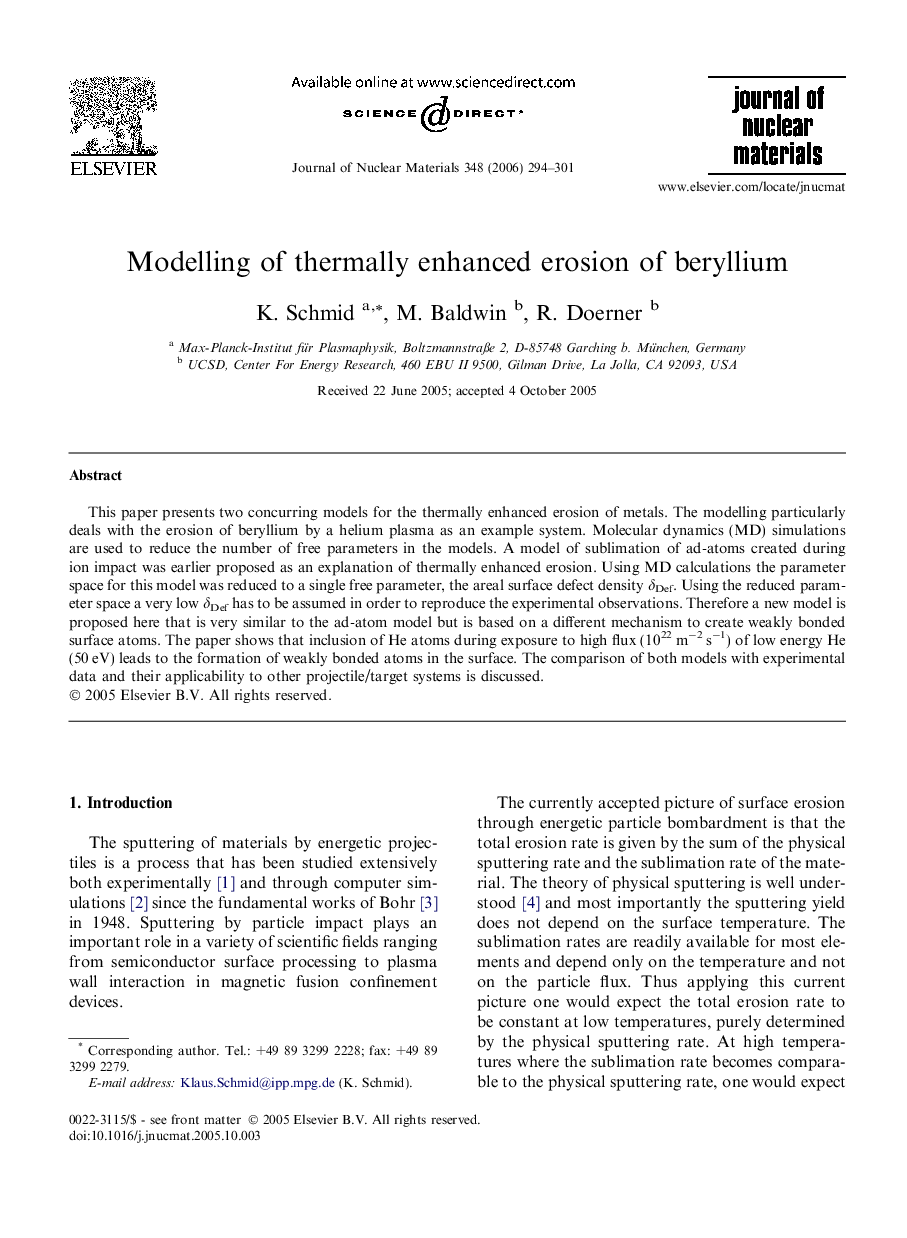| Article ID | Journal | Published Year | Pages | File Type |
|---|---|---|---|---|
| 1570097 | Journal of Nuclear Materials | 2006 | 8 Pages |
This paper presents two concurring models for the thermally enhanced erosion of metals. The modelling particularly deals with the erosion of beryllium by a helium plasma as an example system. Molecular dynamics (MD) simulations are used to reduce the number of free parameters in the models. A model of sublimation of ad-atoms created during ion impact was earlier proposed as an explanation of thermally enhanced erosion. Using MD calculations the parameter space for this model was reduced to a single free parameter, the areal surface defect density δDef. Using the reduced parameter space a very low δDef has to be assumed in order to reproduce the experimental observations. Therefore a new model is proposed here that is very similar to the ad-atom model but is based on a different mechanism to create weakly bonded surface atoms. The paper shows that inclusion of He atoms during exposure to high flux (1022 m−2 s−1) of low energy He (50 eV) leads to the formation of weakly bonded atoms in the surface. The comparison of both models with experimental data and their applicability to other projectile/target systems is discussed.
